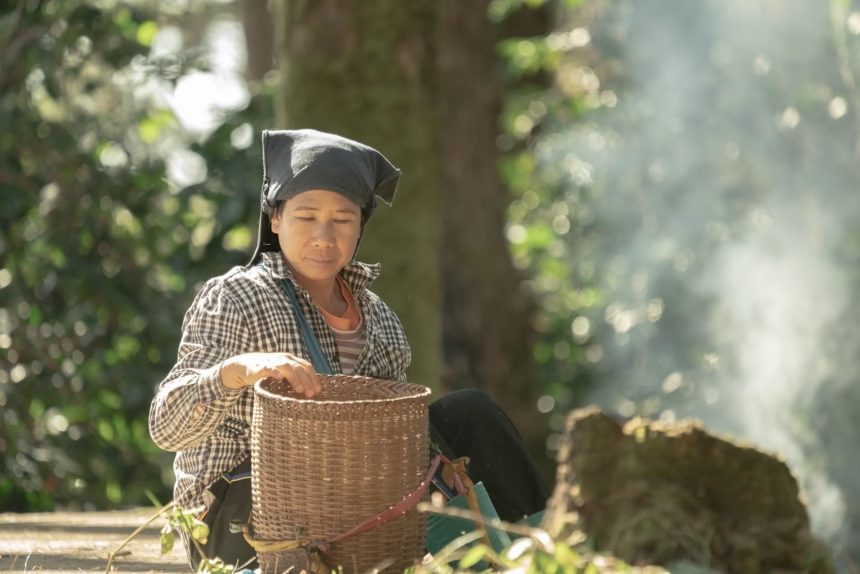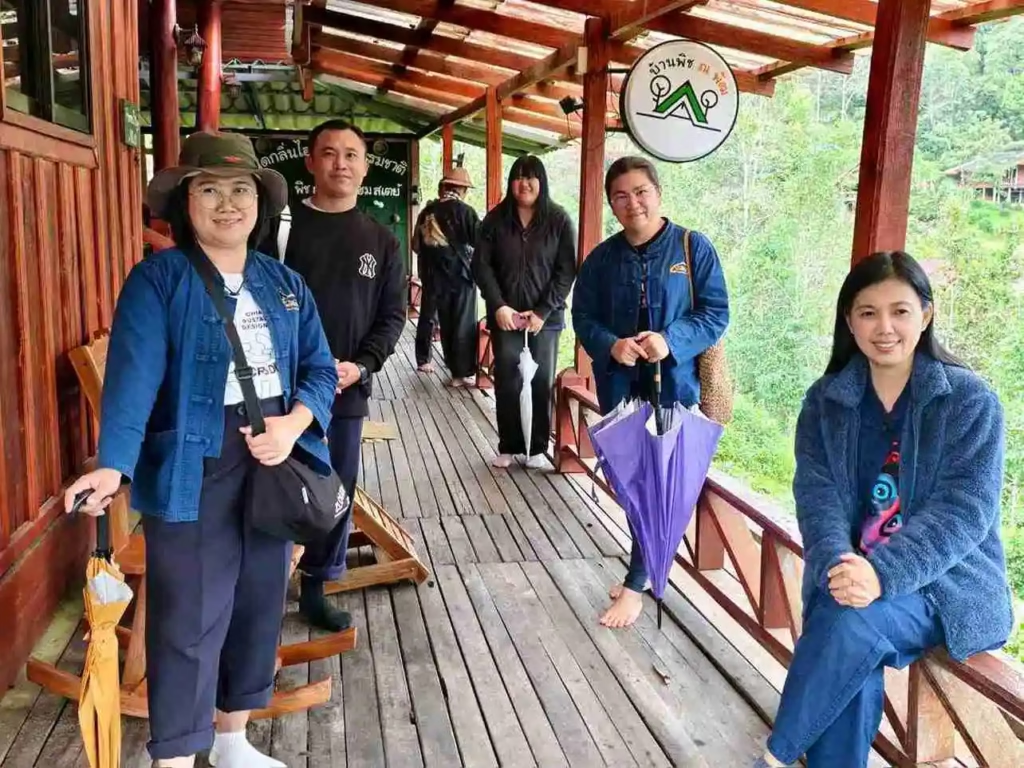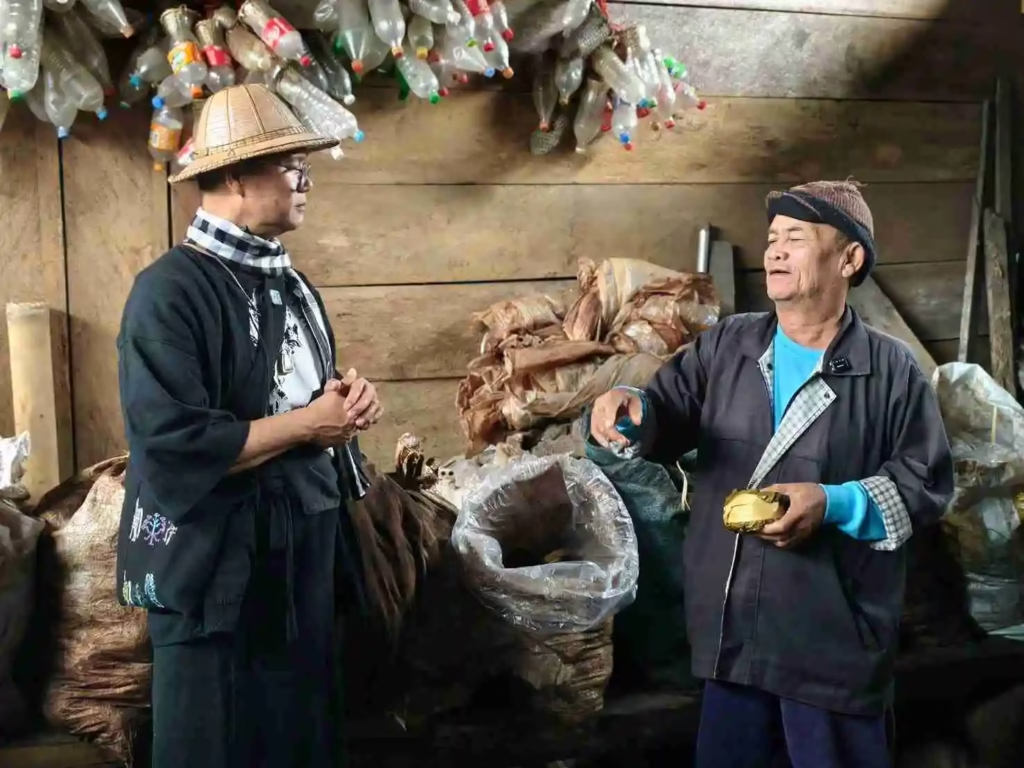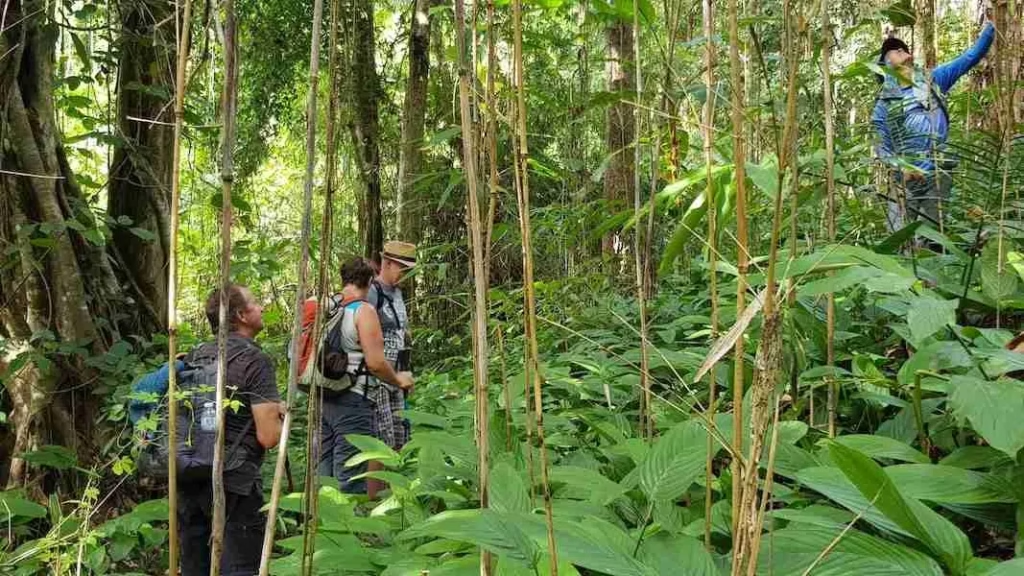CHIANG RAI – In the middle of the rising “Asian tourism war”, many rival countries are racing to launch new attractions, relax visa rules, and expand air routes clearly and steadily. Chiang Rai has chosen a different path. The province is putting its community identity at the centre.
Under the Ministry of Culture’s “Thai Thai” policy, the Chiang Rai Cultural Office has visited Huai Nam Guen village to study its cultural assets and turn them into modern Thai experiences with real economic, social, and emotional value. The aim is to move Thai tourism into a new era where products are distinctive, meaningful, and measurable.
At the same time, Thailand as a whole still has gaps to close. The country needs s stronger destination image, better safety, higher and more stable service standards, and a stronger data structure. All this must keep pace with regional competitors and the TTDI 2024 benchmark, while supporting Thailand’s growing role as an aviation hub.
Projects such as SAT-1 and Suvarnabhumi’s third runway are steps in the right direction, but they must link to a clear plan to bring back quality visitors in a long-term, steady way.
When stories must win over discounts
In the Asian tourism market in 2024 and 2025, many countries have stepped up their efforts. Some create huge new attractions, like Zootopia at Shanghai Disney. Others turn existing sites into deeper “experiences” instead of quick check-in spots, such as Singapore’s Rainforest Wild Asia and ongoing destination rebranding.
At the policy level, countries also introduce easy travel measures. These include visa waivers, longer stays, e-Visas, special visa schemes, and denser flight networks. All of this makes travel decisions faster, simpler, and more appealing to visitors.
Thailand has started to respond. The country has expanded 60-day visa exemptions to more nationalities and launched the Destination Thailand Visa (DTV) to attract digital nomads and creative workers. It is also promoting high-quality medical stays and long-stay visas (LTR and Thailand Privilege) to pull in high-spending travellers.
However, in a region where everyone is pushing hard with smart policy, fighting only on price and discount has clear limits. Cities and provinces now need to “sell value” through strong stories, living culture, everyday life, and rich, hands-on experiences.
Key field activity: Chiang Rai Cultural Office at Huai Nam Guen
On 18 November 2025, the Chiang Rai Provincial Cultural Office, led by Mr Pisan Chansilp, Chiang Rai Provincial Culture Officer, and his team, travelled to Huai Nam Guen village in Mae Chedi subdistrict, Wiang Pa Pao district.
The visit focused on identifying and mapping “unique local cultural capital” under the theme “UNSEEN THAI THAI, Charm of Culture, Chiang Rai Province”. The work relied on close cooperation with community leaders and residents.
Together, they searched for “living stories” (Living Heritage) that the village can protect, pass on, and develop into products, activities, and tourism experiences that support economic, social, and emotional well-being. This aligns with the Ministry of Culture’s “Thai Thai” policy, which aims to bring traditional Thai culture into a modern setting without losing its roots.
This field mission has three main practical goals:
- Cultural mapping
Identify clear local identity, lifestyles, beliefs, wisdom, and folk arts that can be “told, sold, and sustained” over time. - Experience design
Turn local knowledge into real activities, such as workshops, rituals, handicrafts, and local food, that link with nearby travel routes and attractions. - Community capacity building
Raise standards in service, safety, facilities, multilingual welcome, and digital communication, so the village can handle quality and long-staying visitors.
While rival countries build new attractions at speed, Thailand must learn to “retell and re-manage what it already has” so that old assets feel new again and carry value beyond price. Chiang Rai is now testing this idea in real communities through the UNSEEN THAI THAI approach at Huai Nam Guen.
Sample “experience packages” that can work in real life (draft ideas)
- Craft & Spirit
Hands-on workshop with local crafts such as weaving or silver work, combined with stories of beliefs, and a simple forest or water blessing ritual that follows community customs. - Food & Faith
Cook local dishes with “stories on the plate”, learn to plant, pick, and prepare ingredients, then follow a route that links temples, ancient towns, and nearby villages. - Quiet Wellness
Morning meditation, light forest walks, mist bathing, local herbal use, and Thai-style wellness adapted for modern visitors. - Photo & Story
Sunrise and sunset viewpoints, basic storytelling photography classes, and small community events for visitors who like slow travel and daily life scenes.
Every programme must follow clear rules for safety, waste separation, water use, dust and smoke control, and simple “do & don’t” guidelines for guests in several languages. Signs should include Braille and universal symbols, with routes suitable for wheelchair users.
The goal is a Friendly Design destination that “everyone can access”, not just able-bodied visitors.
Lessons from competitors: structure and communication matter as much as the attraction
- Singapore
Singapore builds a strong “city character” through a national tourism brand and steady investment in landmarks, museums, and learning gardens. The public and private sectors work together to raise the visitor experience at every touchpoint, from the airport to creative districts. - China
China uses themed destinations, such as winter cities and renovated ancient towns, as magnets to lengthen seasons and add more activities. It has relaxed some visa rules, which shows that even countries rich in natural sites are now building new products to compete. - Thailand
Thailand is moving forward on airport infrastructure, such as SAT-1 and the third runway, which will help connectivity. The other side of the coin is destination management. Safety, multilingual communication, service standards, environmental care, and solid data systems still need stronger and more consistent work to match TTDI indicators, where Thailand still ranks below some regional rivals.
Data points that give food for thought
- TTDI 2024
The TTDI 2024 report shows Thailand still has clear gaps in the enabling environment, sustainability, and infrastructure when compared with other countries. The message is simple. Reputation alone is not enough. Systems and standards must rise at the same time. - Air network
Suvarnabhumi’s higher place in the Megahubs ranking is a positive sign. However, better flight connections must link to ready-to-sell products in secondary cities like Chiang Rai. That way, transfer passengers can turn into quality visitors who stay, spend, and return. - Visa and visa products
The 60-day stay and DTV scheme will work best when real packages, clear experiences, and trusted standards are already in place. Digital nomads and long-stay visitors should be able to decide and book based on ready options, not receive a visa first, then hunt for ideas later.
Policy and management ideas for Chiang Rai and partner agencies
- Light and agile Chiang Rai DMO
Set up a flexible, cross-sector working group, a kind of light Destination Management Organisation, that links the Cultural Office, TAT, local government, private sector, communities, and universities. This group would design routes, support community-based businesses, run joint marketing, track results, and report to the public each quarter. - Experience standards and Friendly Design
Create simple province-wide standards for service, languages, safety, hygiene, allergy-friendly food, cashless payment, and access for people with disabilities. Then train communities and operators, and issue a Chiang Rai “quality mark” once they meet the standard. - Chiang Rai tourism data lake
Pull key data into one shared dashboard for the province. This should include bookings, popular routes, spending, reviews, satisfaction scores, and common travel issues. Every sector can then plan, adjust, and align budgets based on the same facts. - Prototype to scale
Use Huai Nam Guen as the first UNSEEN THAI THAI model area. After testing, expand to nearby villages using a ring strategy. This helps spread resources, income, visitors, and activities, instead of pushing everyone into one hotspot. - Joint branding and communication
Develop a “Chiang Rai UNSEEN THAI THAI Brand Book” that sets the tone of voice, visual style, ethical tourism rules, dos & don’ts, and respectful photography tips. Agree on a shared content calendar with quality influencers who understand culture, rather than chasing viral trends that ignore local values.
Winning with value that can be measured
The field visit by the Chiang Rai Cultural Office to Huai Nam Guen is far more than a symbolic trip. It marks a clear shift in thinking, from a race for headcount and discounts to a race for value, rich experience, and long-term sustainability.
If Chiang Rai keeps going in this direction and measures real outcomes, the province can become a model of “contemporary cultural routes”. This would help Thailand increase the length of stay, raise spending per person, create local jobs, protect resources, and tell “the Thai story” in a form that visitors can truly feel and understand.
On the national stage, Thailand needs to move forward on two legs at once:
- Structure and policy
Visa rules, air networks, standards, safety, data systems, and DMOs. - Experience and brand
UNSEEN THAI THAI, soft power, storytelling, new routes, and learning based activities.
When strong structures support strong stories, and those stories in turn drive better structures, the country will not have to fight the Tourism War with price alone. Thailand can compete through the meaning and value that visitors are happy to pay for, and keen to return to.
Short timeline: linking policy to real places
- Before 2025
The Ministry of Culture sets the “Thai Thai” framework to drive Thai soft power. - Early to mid 2025
Rival countries launch new landmarks, expand air links, adjust visa rules, and host large events. - October to November 2025
Chiang Rai surveys its cultural capital and turns findings into route plans and community activities. - 18 November 2025
Chiang Rai Cultural Office visits Huai Nam Guen to run cultural mapping and design pilot experiences. - Late 2025 to early 2026
Test packages, set indicators, listen to feedback from visitors, operators, and the community. - Throughout 2026
Scale up the model to more areas, raise standards, and grow a clear activity calendar for secondary cities.
The field information from Chiang Rai, including names of officers, dates, times, and locations, comes from a data set prepared by the source and used here as the main base for the timeline. This local detail is then linked with public, national, local, and regional references on tourism policy and system-level infrastructure.
The article follows principles of neutrality, verifiability, and respect for communities. It connects real events on the ground with policy context, so readers who work in tourism or public policy can use it as part of their decision-making, without guessing numbers or drifting from available public data. The focus stays on actions that are practical, measurable, and flexible in the face of change.















